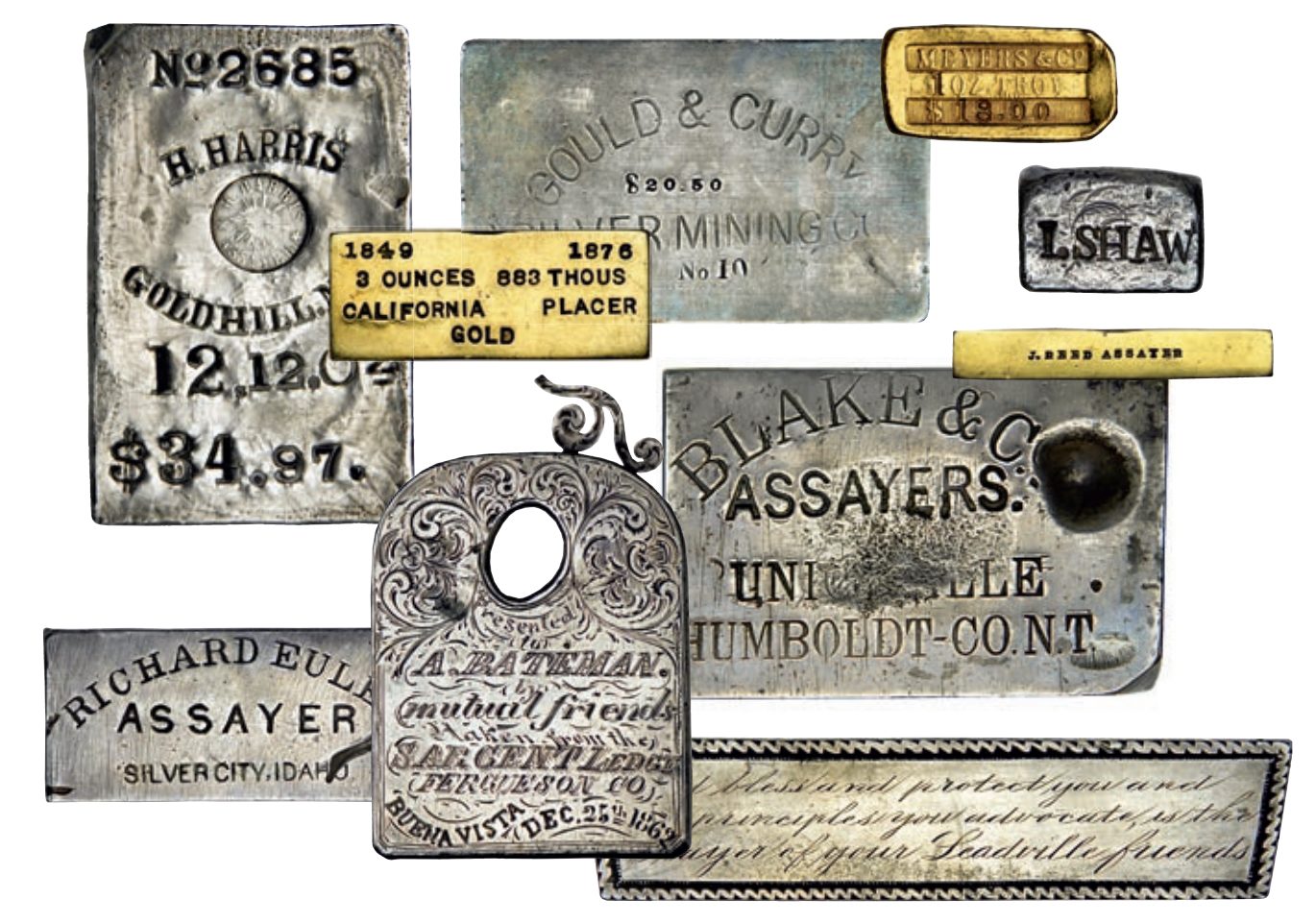In the world of vintage silver bars, 19th-century ingots are revered as the rarest and most valuable treasures. In 2007, Stacks Bowers auctioned off what was arguably the greatest collection assembled of these ingots from John J Ford. This consisted of a group of 59 gold, silver, and mixed metal ingots.
See: Ford Auction Virtual Catalog
The ingots represented decades of collecting activity. Mr. Ford was not the
first to collect western ingots but he was certainly the most determined and thorough. Beginning in the early 1950s Mr. Ford tried not to let an ingot escape his interest. He scoured auction catalogues, advertised widely
in western newspapers and hobby magazines, and paid the expenses of finders who traveled the western states of Arizona and Nevada looking for ingots that might be for sale. Whether he bought any particular ingot was never left up to chance and if he didn’t buy one he wanted the first time he made an offer for it, the notes he took at the time about its ownership were
always close to hand and never far from the front of his prodigious memory. Some ingots show how determined Mr. Ford could be, over a space
of decades in some cases, to track down, buy, and own an ingot that struck his fancy.
This is the same determination that a true collector of rare ingots should pursue.
The Significance of 19th Century Ingots
The 19th century (the 1800’s) was a time of great economic and industrial expansion, marked by the proliferation of silver mining and minting activities across the globe, particularly in the US during the 1830’s through 1850’s. During this period, ingots served as the primary form of silver bullion, often used for trade, commerce, and wealth storage. Today, very few of those ingots survive. Those that do, provide us with a captivating glimpse into this bygone era, reflecting the craftsmanship, history, and economic dynamics of the time.
Rarity and Collectibility
Among all vintage silver bars, 19th-century ingots stand out for their ultra rarity and collectibility. Unlike modern bullion bars, which are mass-produced and standardized, or even modern vintage which is more limited in production, the 19th-century ingots were often handcrafted in limited quantities by local mints, mining companies, or private assayers. As a result, surviving specimens are extremely scarce, with each ingot bearing unique characteristics, such as distinctive markings, stamps, or engravings. These features not only add to their aesthetic appeal but also contribute to their historical and numismatic value. More often than not, there is only one unique surviving example for a single assayer!
Historical Context
To truly appreciate the rarity and value of 19th-century ingots, it’s essential to understand the historical context in which they were produced. From the Appalachian Gold Rush to the California Gold Rush to the silver booms in countries like Mexico, Bolivia, and the United States, the 19th century witnessed unprecedented mining activity, leading to the production of vast quantities of silver bullion. However, only a fraction of this bullion was cast into silver, gold, or mixed metal ingots, making surviving examples exceedingly rare and highly prized by collectors and investors alike.
Ingots such as these are rare survivors of a time when precious metals were still ripped from the earth by individual miners, probably in the form of nuggets, nodules, dust, or some other fairly concentrated forms. Almost without exception these ingots are small, not much larger than could be easily carried in one small person’s hand. Large mining companies also made ingots and some of the assayers also made much larger ingots for big mining companies.
Investment Potential
For discerning investors seeking tangible assets with enduring value, 19th-century ingots offer a compelling opportunity to enjoy a fascinating world of ultra rare collectibles. Not only do they serve as an alternative hedge against economic uncertainty and inflation, but they also boast intrinsic value as historical artifacts. With their scarcity and provenance, these ingots have consistently commanded premium prices at auctions and private sales, making them coveted additions to any investment portfolio.
How to Acquire
Interested in acquiring a rare 19th-century ingot for your collection or investment portfolio? RareIngot.com offers a curated selection of authentic specimens from reputable dealers, auction houses, and private collectors. We are dedicated to providing personalized assistance and guidance to ensure a seamless and rewarding acquisition experience.
Conclusion
As the pinnacle of rarity and value in the world of silver bars, 19th-century ingots stand as testament to the enduring allure of historical assays in the form of numismatic bullion. Whether admired for their historical significance, craftsmanship, or investment potential as an alternative asset, these rare treasures continue to captivate enthusiasts and collectors around the globe. Browse through the extensive census on RareIngot.com today and discover the timeless beauty and intrinsic value of 19th-century ingots!
Contact Us
Have questions or need assistance? Contact our team RareIngot.com for personalized guidance and support in your ultra rare bar hunting and collecting journey.

